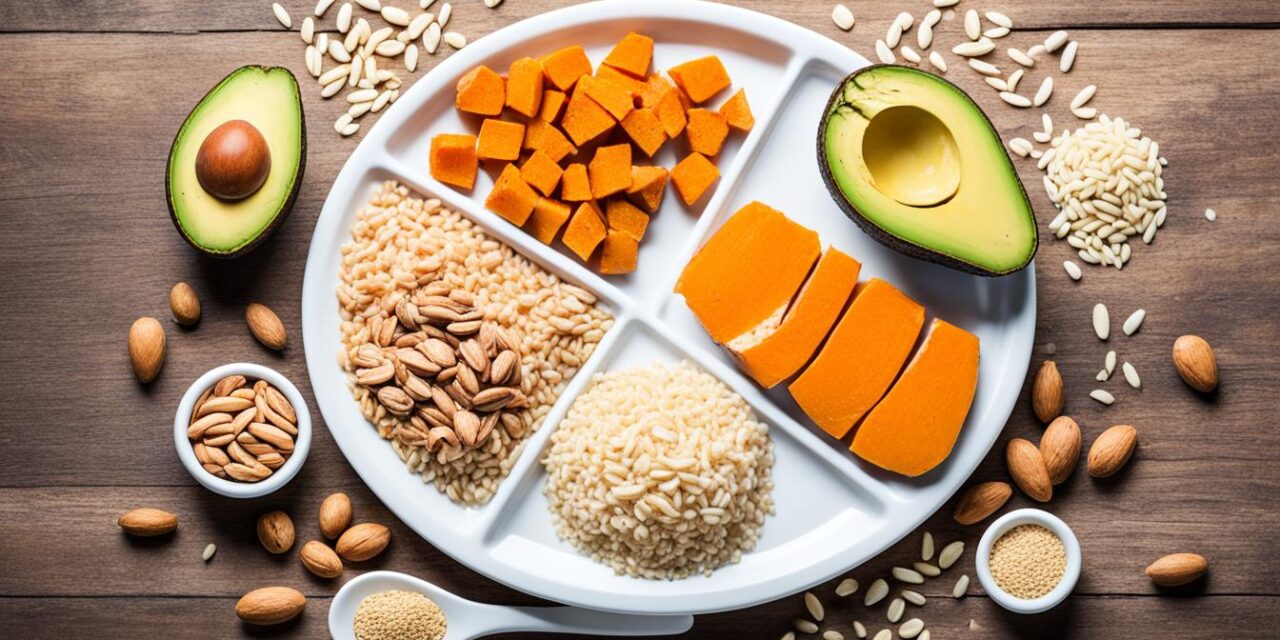Are you tired of trying every diet fad with little to no success? Are you ready to take control of your weight loss journey with a method that truly works? Enter counting macros, the secret sauce that can revolutionize the way you approach weight loss.
But before we dive into the nitty-gritty of how counting macros can help you shed those extra pounds, let me share a relatable story that sets the stage for our discussion.
Meet Sarah, a hardworking professional and a self-proclaimed food lover. Like many of us, Sarah struggled with her weight and tried every diet out there, from keto to paleo, with limited success. Despite putting in her best effort, the scale just wouldn’t budge.
One day, while scrolling through her favorite fitness blog, Sarah stumbled upon an article about counting macros. Intrigued by this new approach, she decided to give it a shot.
As Sarah educated herself about macros, she realized that it wasn’t about restricting herself but about finding the right balance of protein, carbohydrates, and fats that would fuel her body and support her weight loss goals. It was a game-changer for Sarah.
With a newfound understanding of macros, Sarah started tracking her intake meticulously. She learned how to make smarter food choices, ensuring that every meal was packed with the right nutrients. And the best part? She didn’t have to give up her favorite foods entirely.
Fast forward a few months, and Sarah had transformed her body. Not only did she lose those stubborn pounds, but she also felt healthier, stronger, and more confident than ever before. Counting macros had become her weight loss holy grail.
Key Takeaways:
- Counting macros is a method that focuses on the balance of protein, carbohydrates, and fats in your diet.
- Tracking macro intake can ensure that you are getting the right nutrients in the right amounts to support your weight loss goals.
- Counting macros allows for flexibility and personalization, making it a sustainable approach to weight loss.
- By educating yourself about the different macronutrients and finding the right balance, you can achieve long-term, sustainable weight loss.
- Counting macros should be combined with other healthy lifestyle habits, such as regular exercise and stress management, for optimal results.
The Difference Between Calories: Not All Calories Are Created Equal
When it comes to weight loss, not all calories are created equal. Sure, calorie balance, or the infamous “calories in vs. calories out,” plays a role in shedding those extra pounds. But the source of those calories also matters. It’s time to dig deeper and uncover the truth: not all calories are created equal.
Let’s talk sugar, shall we? Specifically, fructose, the sneaky sugar hiding in many of our favorite treats. Consuming calories from sugar, especially fructose, can have a different metabolic effect on the body compared to calories from other sources.
Picture this: You’re sipping on a soda loaded with sugar. The fructose in that sugary delight not only threatens your waistline but also triggers a spike in insulin levels. And you know what happens when insulin goes haywire? Fat loss becomes more challenging, and pesky health issues like diabetes and weight gain can creep up on you. Yikes!
But fear not, dear reader. Not all hope is lost. Switching your sugar-laden delights for calories from protein can be a game-changer on your weight loss journey. Here’s why: Calories from protein don’t cause the same insulin skyrocketing effect as sugar. So, by making smarter food choices and opting for protein-packed meals, you can savor the taste of victory in your weight loss battle.
Remember, it’s not just about the number of calories you consume, but also the quality and impact they have on your body. So, choose wisely, my friend.
The Science Behind the Sugar Saga
Now, let’s dive a bit deeper into the science behind the sugar saga. Our bodies process and metabolize different types of sugar in distinct ways. When you consume fructose, it gets processed primarily in the liver, unlike other types of sugar that distribute more evenly throughout the body.
This unique liver processing of fructose can lead to various metabolic issues, such as insulin resistance, increased belly fat storage, and elevated triglyceride levels. In simple terms, it’s like your body saying, “Hold up, we’re under attack!” and scrambling to deal with the metabolic havoc wreaked by fructose.
On the other hand, when it comes to protein, our bodies handle it with much more finesse. Protein doesn’t cause the same insulin surge as sugar, making it a smarter choice for weight loss. Plus, protein has the added benefits of keeping you satiated and supporting muscle repair and growth. It’s like a weight loss superhero swooping in to save the day!
Choosing Wisely for Weight Loss
So, how can you make the right choices? It all comes down to being mindful of your caloric intake and the sources of those calories. Opt for nutrient-dense foods that provide you with the sustenance your body craves without the metabolic turmoil. Choose lean proteins like chicken, fish, and plant-based options, and load up on fruits and vegetables to fuel your body with vitamins and minerals.
Here’s a simple rule to remember: less sugar, more protein. The fewer sugary temptations you give in to, the better for your weight loss goals. Fill your plate with protein-rich foods and watch your insulin levels stay steady, paving the way for effective fat loss.
So, my friend, the bottom line is simple: when it comes to calories, not all are created equal. Sugar, especially fructose, can wreak havoc on your weight loss journey, while protein can be your saving grace. Choose wisely, make mindful choices, and let your fabulous self shine through on your path to weight loss success.
The Importance of Macronutrients: Protein, Carbohydrates, and Fats
Macronutrients are the superheroes of our bodies, providing the energy we need to conquer our weight loss goals. They come in the form of protein, carbohydrates, and fats, each playing a crucial role in our overall health and fitness journey.
This trio of nutrients work together harmoniously to support various functions in our bodies. Protein is the muscle-repairing powerhouse that also keeps you feeling satisfied and full for longer. Carbohydrates supply your body with the necessary fuel to power through intense workouts and promote overall energy balance. Fats are the unsung heroes, crucial for hormone production and brain health.
The Power Players: Macronutrients Unleashed
Let’s meet our macro heroes and see what they bring to the table:
| Macronutrient | Primary Functions | Food Sources |
|---|---|---|
| Protein | Supports muscle repair and growth, enhances satiety | Chicken breast, fish, tofu, Greek yogurt |
| Carbohydrates | Provides energy, fuels workouts | Whole grains, fruits, vegetables, legumes |
| Fats | Aids hormone production, supports brain health | Avocado, nuts, olive oil, fatty fish |
Now that you’ve met the macronutrient squad, it’s essential to strike a perfect balance to achieve your weight loss goals. Balancing your macronutrient intake involves tracking and adjusting your caloric intake to meet your specific needs. This ensures you’re getting the right nutrients in the right amounts.
So, how do you achieve this delicate balance? It starts with tracking your macro intake to understand your current ratios and then making adjustments based on your goals. For example, if you’re looking to lose weight, you might increase protein intake to preserve muscle mass while decreasing fat and carbohydrate intake to create a calorie deficit.
Counting Macros: Your Personalized Path
Calculating your macros and creating a personalized diet plan can be a game-changer in your weight loss journey. It helps you optimize your food choices and ensure they align with your specific goals and body composition. By keeping tabs on your macros, you can stay on track and make adjustments as needed.
Remember, there is no one-size-fits-all approach when it comes to macronutrients. Everyone’s needs and preferences are unique, so take the time to experiment and find what works best for you.
Don’t just count your macros; make your macros count!
So, embark on your macronutrient adventure, fuel your body with the right nutrients, and watch as your weight loss goals become tangible realities. The superhero trio of protein, carbohydrates, and fats is here to help you every step of the way.
Creating a Personalized Macronutrient Diet Plan
So, you’ve decided to embark on a journey towards a healthier you by following a personalized macronutrient diet plan. Well, congratulations! This is a smart and strategic approach to achieve your weight loss or muscle gain goals.
Before diving into the nitty-gritty details, let’s discuss the foundation of a personalized macronutrient diet plan: Total Daily Energy Expenditure (TDEE). Your TDEE represents the number of calories your body needs to maintain its current weight. This value is influenced by factors such as your age, sex, weight, height, and activity level.
Now comes the pivotal decision: do you want to be in a caloric deficit or a caloric surplus? If you are aiming for weight loss, a caloric deficit is your go-to strategy. On the other hand, if you want to build muscle, a caloric surplus will be your ticket to gains.
With your TDEE and goal in mind, it’s time to customize your macronutrient intake. The three main macronutrients you need to focus on are protein, carbohydrates, and fats. Each of these macronutrients plays a vital role in supporting your body’s functions and achieving your desired outcomes.
For weight loss, you’ll want to increase your protein intake to preserve muscle mass while creating a calorie deficit. Protein is known for promoting muscle repair and growth, making it an essential component of any weight loss plan. Conversely, you’ll want to decrease your intake of fat and carbohydrates to ensure you consume fewer calories than your body needs.
Tracking your macronutrient intake is an effective way to stay on track and make adjustments as needed. There are various mobile apps and online tools available that can help you monitor your macronutrient intake and ensure you are hitting your target goals.
To illustrate how a personalized macronutrient diet plan works, here’s an example:
| Macronutrient | Grams per day |
|---|---|
| Protein | 120g |
| Carbohydrates | 150g |
| Fat | 50g |
Remember, these numbers are just an example and may vary depending on your individual needs and goals.
By following a personalized macronutrient diet plan, you’ll ensure that you are providing your body with the right nutrients in the right amounts, optimizing your weight loss or muscle gain journey.
Tracking your macronutrient intake can help you stay on track and make adjustments as needed.
Benefits of a Personalized Macronutrient Diet Plan
- Optimization of nutrient intake for specific goals
- Preservation of muscle mass during weight loss
- Improved satiety and energy levels
- Enhanced recovery and muscle gain during bulking phases
- Greater flexibility in food choices
So, get ready to embark on a macronutrient counting adventure and tailor your diet to meet your specific needs. You’ll be amazed at the impact it can have on your weight loss or muscle gain journey.
Conclusion
Congratulations on reaching the conclusion of this article! Now that you have learned about counting macros for weight loss and the importance of a personalized diet plan, you are well-equipped to embark on your journey towards a healthier you.
Counting macros can be an effective tool to achieve weight loss and maintain a balanced nutrition plan. By tracking your protein, carbohydrate, and fat intake, you can ensure that you are fueling your body with the right nutrients in the right proportions. However, it’s crucial to remember that counting macros is just one piece of the puzzle.
To maximize your weight loss success, it’s essential to pair counting macros with other healthy lifestyle habits. Incorporate regular exercise into your routine, prioritize proper sleep, and manage stress effectively. Remember, sustainable weight loss is a result of comprehensive lifestyle changes.
Ultimately, finding the perfect balance of macros for your individual needs is key. Experiment, observe how your body responds, and make adjustments along the way. By taking a personalized approach and focusing on balanced nutrition, you can achieve your weight loss goals and pave the way for a healthier future.
FAQ
Is counting macros the weight loss holy grail?
What are macros?
How do I create a personalized macronutrient diet plan?
How can counting macros help with weight loss?
Is counting macros the only factor in weight loss?
MORE SOURCES TO READ:
- https://www.styleatacertainage.com/fitness/best-way-to-lose-weight/
- https://exceednutrition.com/macronutrient-diet-plan/
- https://www.warriorgoddesskettlebelltraining.com/why-i-count-macros-not-calories-for-fatloss/
![]()














Recent Comments